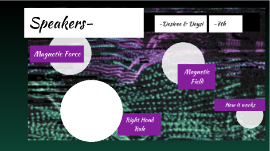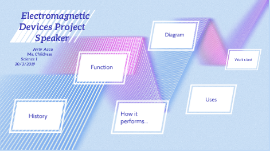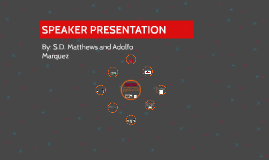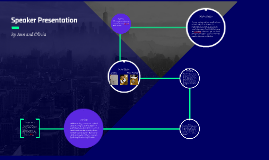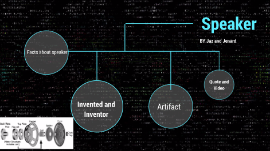Speaker presentation
Transcript: Aviv Acco Ms. Childress Science I 30/3/2019 Electromagnetic Devices Project Speaker History History of the speakers Since the dawn of history, at least since the dawn of record history, people have sung, played and listened to music. Until the beginning of the twentieth century, the only way to listen to music was to participate in live concerts, including musicians singing and playing musical instruments. Inventors Towards the end of the nineteenth century and the beginning of the twentieth century, a number of inventions were developed, these allowed listening to recorded and reconstructed music. Inventors Alexander Graham Bell The first invention, which is the basis for all the recording and playback systems of music, is the phone. The phone is a device for receiving, transmitting and playing sounds and sounds - or transmitting speech between two points via wires. The invention and development of a number of people paved the way for the invention of the telephone. The improved phone patent was registered by Alexander Graham Bell in the United States in the mid-1870's. Ernst Siemens In 1920, Ernst Siemens released an advanced version of the speakers, that was developed based on a vacuum tube or radio tubes and tubes or valves. This electronic amplification enabled the first electronic recording devices, which were magnetic wire records or wire records, in which the recording was made on a wire of magnetic metal. Function Speakers Function Speakers are a very useful device it's purpose is to take an amplified signal and turn it into sound. The function of loud speaker is to convert an electrical wave into a mechanical wave - sound. Speakers comes in pairs, it allows them to produce stereo sound. Both left and right speakers transmit audio on two separate channels, since we use to hear sounds from the left and right at the same time, by using two speakers, the sound is more natural. How it performs... How it perform Speakers are transducers that convert electromagnetic waves into sound waves. Inside the speaker there is electromagnet: a metal coil which creates a magnetic field when an electric current flows through it. This coil is like a permanent magnet, but it can revers the direction of the current in the coil and flips the poles of the magnet. When the pulses of electricity pass through the coil of the electromagnet, the direction of its magnetic field is rapidly changed. The electromagnet is attached to a cone made of a flexible material than it amplifies these vibrations, pumping sound waves into the surrounding air and towards our ears. Diagram Diagram Uses of Speakers Electric Devices Phones Music Uses Electric Devices Electric Devices There are so many electronic devices who use speakers: from our home stereo - to hear music, listen to the radio, play the computer, or on the big screen - the cinema. Phones and talking devices The telephone was the first invention that used speakers, since then we use speakers to talk and communicate from far or near distances. Phones Live music Today speakers allow us to listen to music in a good quality eve if the singer or band are on the big stage far way. The good qualities of the speakers brings us pure sound from very far away - is if the band is standing just near to us. Music Works Cited http://edisontechcenter.org/speakers.html https://www.voices.com/blog/history-loudspeaker https://www.thoughtco.com/history-of-loudspeaker-4076782 https://www.gov.mb.ca/legislature/members/speaker_history.html https://www.timetoast.com/timelines/the-history-of-the-speaker http://www.physics.org/article-questions.asp?id=54 Work cited







